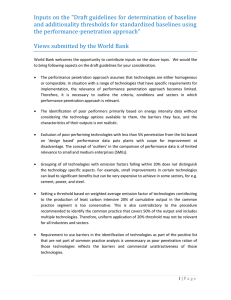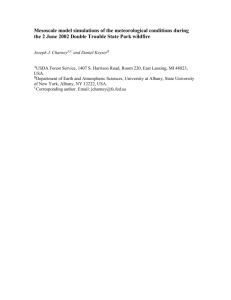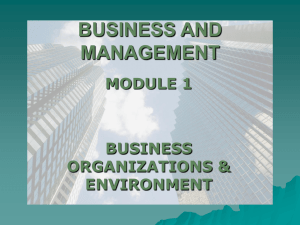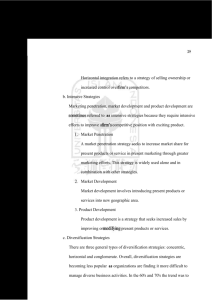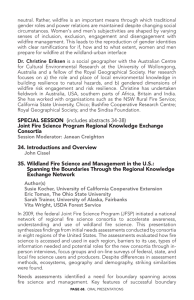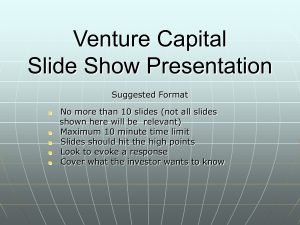How Big Should Sample Size be? • Example ,…,y
advertisement
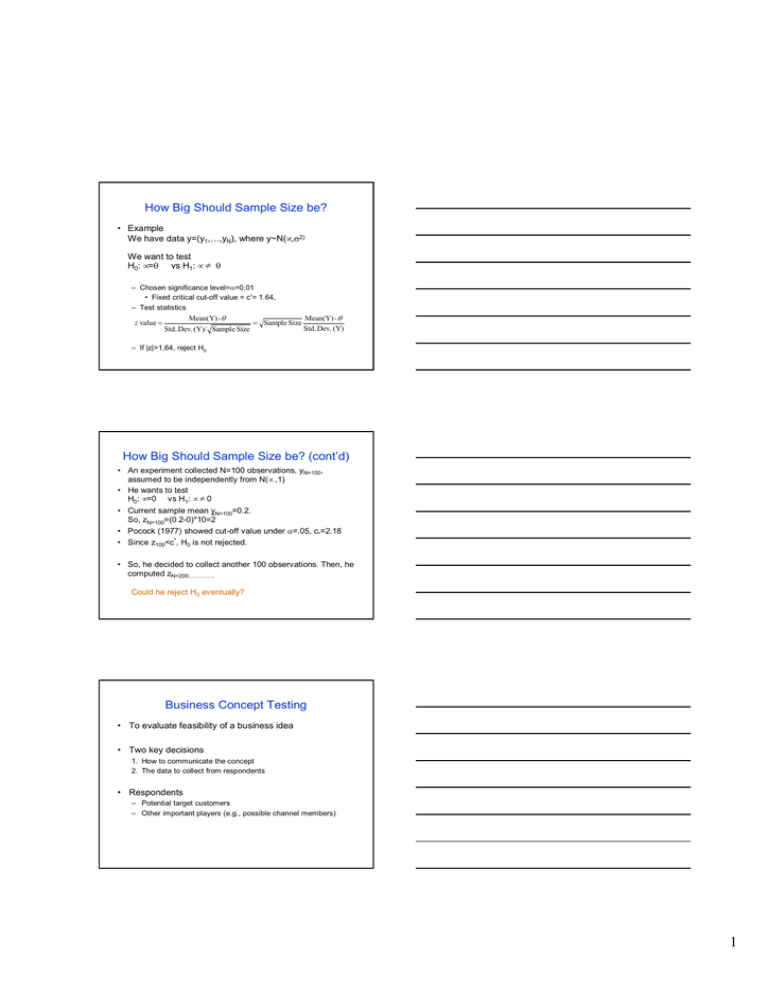
How Big Should Sample Size be? • Example We have data y=(y1,…,yN), where y~N(µ,σ2) We want to test H0: µ=θ vs H1: µç θ – Chosen significance level=α=0.01 • Fixed critical cut-off value = c*= 1.64, – Test statistics z value = Mean(Y) -θ Mean(Y) - θ = Sample Size Std. Dev. (Y) Std. Dev. (Y)/ Sample Size – If |z|>1,64, reject H0 How Big Should Sample Size be? (cont’d) • An experiment collected N=100 observations, yN=100, assumed to be independently from N(µ ,1) • He wants to test H0: µ=0 vs H1: µç0 • Current sample mean yN=100=0.2. So, zN=100=(0.2-0)*10=2 • Pocock (1977) showed cut-off value under α=.05, c*=2.18 • Since z100<c*, H0 is not rejected. • So, he decided to collect another 100 observations. Then, he computed zN=200………….. Could he reject H0 eventually? Business Concept Testing • To evaluate feasibility of a business idea • Two key decisions 1. How to communicate the concept 2. The data to collect from respondents • Respondents – Potential target customers – Other important players (e.g., possible channel members) 1 Measures – Primary • Intended purchase measures • Overall product diagnostics • Special attribute diagnostics • Respondents profiling variables – Secondary • Open-ended “reason why” How to Present A Business Concept? • Use simple written statement on the business concept (possibly with visual stimuli) – A short statement of the core product concept – Alternatively, a vivid story board Your Task • Develop a research plan for concept testing of LINEPASS. • Objective • Respondents • Sample size • Method • Stimuli • Data • Measurement • Analysis 2 Affinity Diagram (Kawkita Jiro Method) Fishbone Diagram Market Entry Strategies These firms… are characterized by these elements: Successful pioneers [ Netscape] -Large entry scale -Broad product line -High product quality fast followers [ Microsoft ] -Larger entry scale than the pioneer -Leapfrogging the pioneer with superior technology, quality and customer service. Successful late entrant - Focus on peripheral target markets or niches Mass-Market Successful Penetration Niche Penetration 3 Market Entry Strategy for Pioneer 1. Mass Penetration Netscape 2. Niche Penetration 3. Focused Sequential Penetration Trakus Situations Favoring Alternative Marketing Strategies for Pioneers Mass-Market Penetration Focused Sequential Penetration Market Characteristics -large potential demand -homogeneous customer needs -short diffusion process -large potential demand -fragmented market -relatively longer diffusion process Product Characteristics -difficult to copy -limited sources of supply -complex production process -easily copied or adopted -many sources of supply -relatively simple production process Competitor Characteristics -few potential competitors -Few sources of differential advantage -many potential competitors -many possible sources of differential advantage Firm Characteristics -strong product engineering skills -strong marketing skills and resources -sufficient financial and organizational resources -limited product engineering skills and resources -limited marketing skills and resources -insufficient financial and organizational resources Strategic Objectives Mass-Market Penetration WildFire Focused Penetration Short-term -Maximize number of adopters in total market -Invest heavily to build future volume and share -Maximize number of adopters in initial target segment -Limited investment to build volume and share in chosen initial niche Intermediateterm -Attempt to preempt competition -Maintain leading market position even if some sacrifice of margins is necessary in short terms as new competitors enter -Maintain leading share position in target segment even if some sacrifice of margins is necessary in short terms as new competitors enter -Accumulate resources and experience from initial niche and utilize them to penetrate other segments. Long-term -Maximize ROI - Maximize ROI 4 EPILOGUE • In January 1995, McCaw invested $5 million in Wildfire and obtained 12.5% of the company’s shares – Mutually non-exclusive collaboration for Network Wildfire – McCaw placed an order for a 500-user prototype – Planned to scale up a 500-user prototype Network Wildfire to a 1,500 user system by the end of 1996. • In July 2000, Wildfire was acquired for about $142 million by Orange Telecommunications, a subsidiary of France Telecom. • Currently, Wildfire is focusing on Network and Corporate systems. • Entrepreneurs do not have sufficient information – Lots of missing information – many hypothesis • However, it is crucial to make on-line correction of initial plan over time. • Entrepreneurs need to gather critical information in order to make correct on-line correction of plan. – Fill missing information – Test hypothesis • Wildfire’s decision on line-of-business highlights the need of obtaining critical information for its on-line correction of plan. • Wildfire case also highlights the importance of partnership in order to overcome the problem of limited resources. 5
